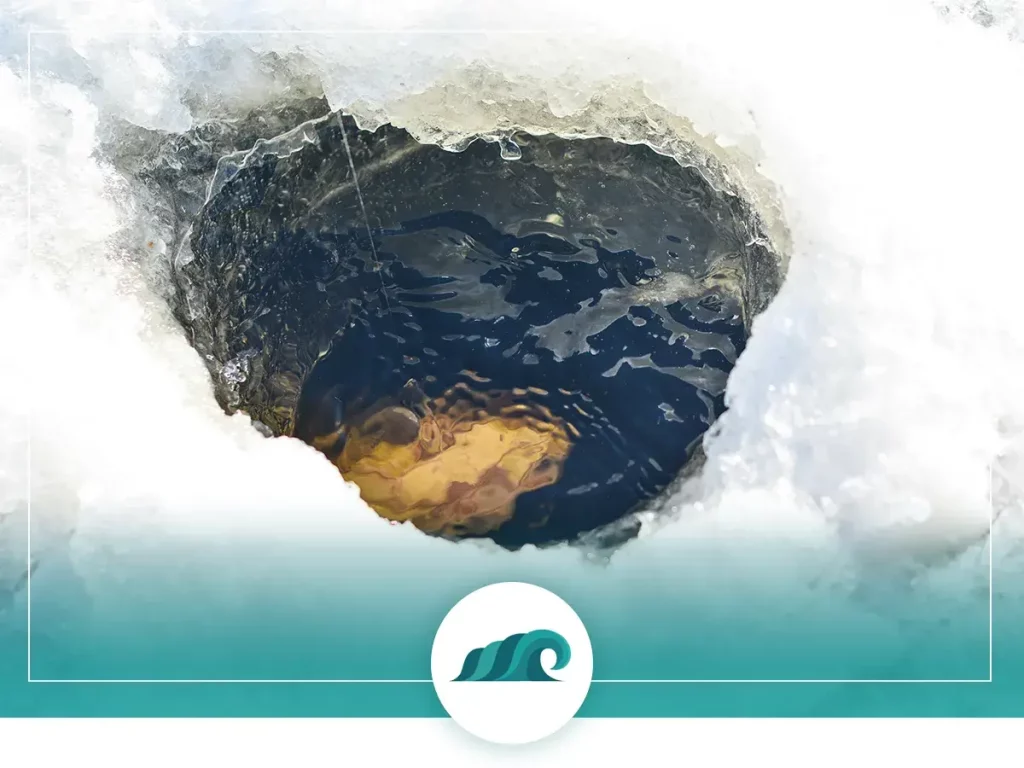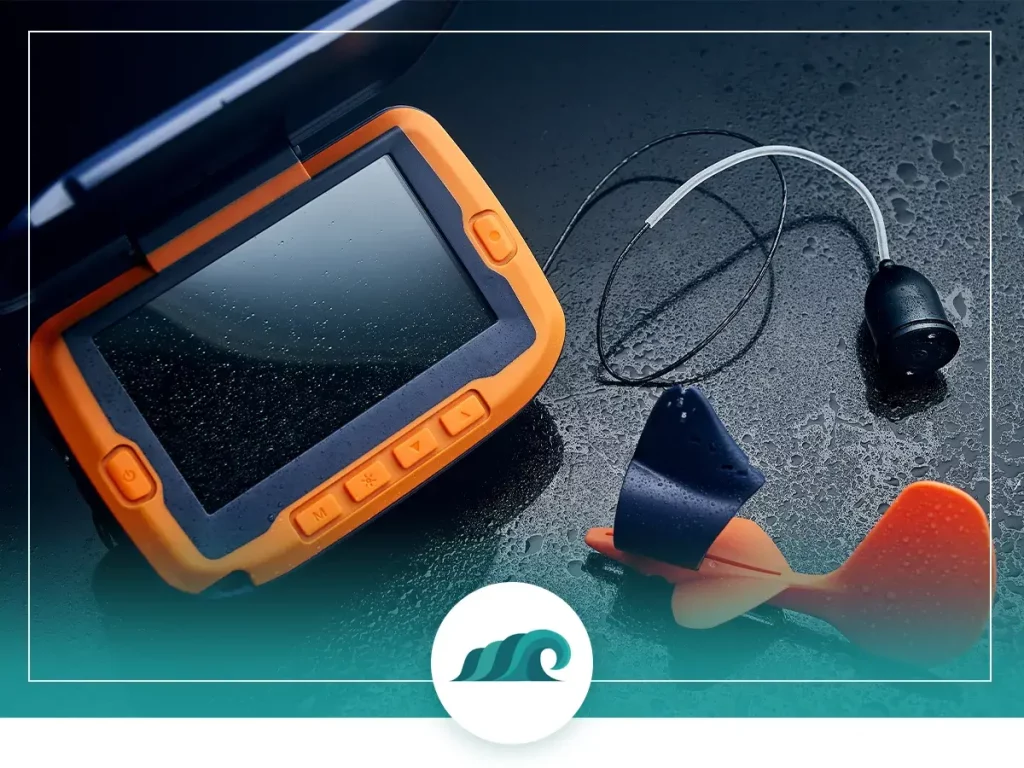Anglers perceive winter fishing for crappie as hit or miss, but ice fishing for crappie does not have to be that way. With a few valuable tips for fishing for crappie under the ice, any angler can quickly catch crappie like a pro, regardless of what fishing rod or rod tip they use.
Below are some crappie ice fishing tips and advice that will help novice anglers and intermediate ice fishermen improve their chances of catching crappie. Or, it will at least help anglers ice fishing for crappie strengthen their chances of catching something.
Research and Ask Locals About Crappie Fishing

Crappie are not like largemouth bass that announce their presence with a bang and seem incapable of nuance. Finding active crappies while ice fishing takes research.
Whether you are fishing for crappie using tiny jigs, crappie minnows, other live bait like wax worms, lures like spinners, or larger tungsten jigs, you must research the lake you are going to be fishing and identify:
- Areas winter crappie feed
- Live bait that is getting a response
- Lures that are working for your rod
To accomplish all three goals, you should investigate:
- Where shallow water exists, deep water begins, and how far the deeper waters extend into the lake
- Whether the crappie are hanging out in deeper water or shallower water is producing more crappie bites or see more active fish
- What backwater areas are worth exploring for white crappie and black crappie
- When during the season does steady pressure on the crappie population die down
In addition, talk with locals about when most ice fishing anglers start drilling holes. Ask if they will share ice fishing advice to help with finding crappie, what crappie are eating at that point in the season, and how to catch more fish.
Talking with locals to find crappie and finding fish in general is especially important when fishing big lakes because their climate and environment vary from place to place. Plus, many locals will open up and share their knowledge about how to find fish in the local lake and when the crappie ice fishing heats up if you ask politely.
Don’t Commit to Just One Depth When Catching Crappie

Anglers tend to assume winter fish go deep all the time. If you want to catch some crappie, you must be willing to test the entire water column because they will hang out at different depths, just like during open water fishing season. That usually means you need to drill holes in the ice in shallow areas as well as deeper sites if you want to catch crappie.
Be Mobile

While crappie are not finicky fish, they do move around a lot, which means each hole you place must have a purpose. Every hole you drill should:
- Help cover ground
- Be near a drop-off or known fish hotspot
- Cover specific depths to allow for maximum coverage of fish habitat. So drill lots!
- Avoid random hole placement that will waste time
Jig or Use Live Minnows

As a rule, you should be willing to try any bait on your rod, including unusual choices in your tackle box, if local anglers recommend it.
Generally, however, using a jig or crappie minnow is your best bet to land a fish. Smaller fish tend to go after a flashy jig or very small crappie minnow, while larger crappie will go after both of those and a larger lure. As far as fish go, crappie are decidedly on the “not picky” end of the bait spectrum.
Switching to a small jig is a good idea if the crappie are not biting. Crappie conserve energy as much as possible later into the season, so using a larger jig when doing late winter crappie ice fishing might mean too much energy spent for the crappie for very little return.
Watch Other Anglers Catch Fish

If other fish caught from mid-winter until late spring are warmer-water-oriented fish, then you know crappie are probably on the prowl. You just have to find them.
The crappie might not be that active if the only fish caught are colder water fish.
Check Your Fishing Regulations

Make sure your state’s regulations permit winter fishing for crappie when you want to go. That might seem obvious, but some states have weird rules that apply to:
- Ice fishing season start dates
- Ice in and ice out determinations
- Type of water allowed to be fished (river, lake, pond, etc.)
- Lures permitted for winter fishing
Some states even have specialized permits for ice fishing. The smart move is to not assume anything legal in open water fishing is legal as it pertains to ice fishing.
Give Shallow Lakes a Shot

Crappie are extremely mobile fish, pretty much all year long. That means a population living in a shallower lake is probably also active. Most anglers tend to think deeper in terms of water depth and ice fishing, but crappie often defy that logic. A spring bobber is your best bet here!
Use Technology

If you have access to the latest and greatest technology, use it to help locate crappie. An underwater camera, for example, can help you quickly narrow down swaths of a body of water based on the crappie you see and whether other species are active.
A camera can also show you contours that you might not be able to see on a map and show you how active the general fish population is.
If, for example, baitfish are nowhere to be seen, but you do see crappie, you know offering a bait fish will likely be warmly received. If baitfish are present in large numbers, that usually means the water in that area is warmer. It also means larger fish are probably just out of camera range and waiting for a baitfish to go too far astray.
Final Thoughts
These are a few basic pieces of advice and tips to help you get started on your crappie fishing saga. Listening to locals, staying mobile, and using technology are probably the three most important tips. Above all, have fun and be patient because if you are, eventually, you will get on the crappie.




